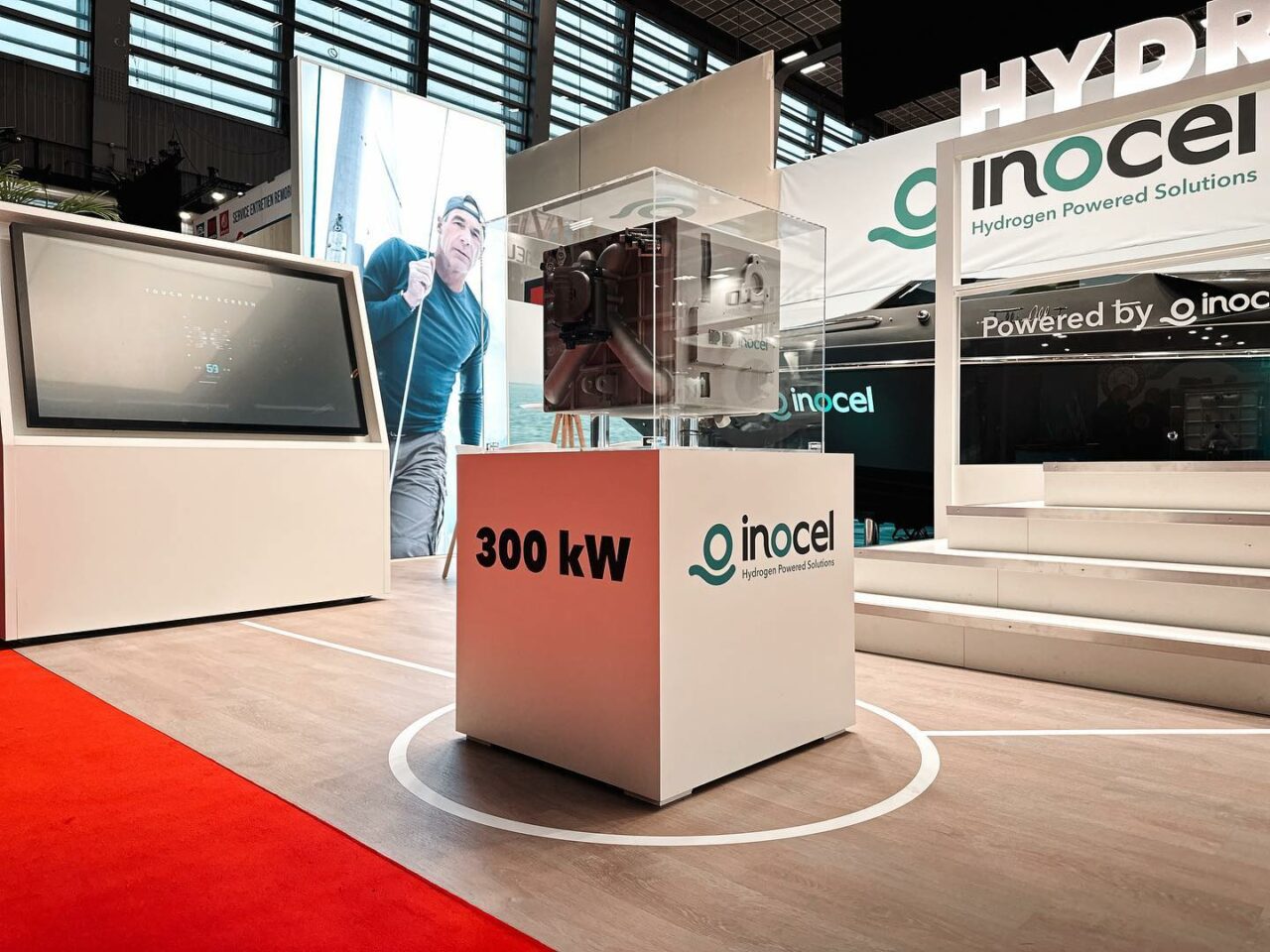
High-powered battery cells have already allowed people to effectively carry computers in their pockets, in the form of cellphones. Now, INOCEL believes it can push the electrification of society a step further with a new 300 kilowatt high power fuel cell.
The French tech company will show off its latest technology at the CES Unveiled event at Mandalay Bay in Las Vegas in January, part of the larger CES conference.
The INOCEL Z300, a proton exchange membrane fuel cell, is contained in a cubic casing roughly 5 meters along each dimension. The 100-kilogram cell can reach a net peak power of 300 kilowatts, and ramps up faster than most power cells on the market. The company has already showcased the device as a power source useful for boaters and other major vehicle owners and manufacturers.
“The INOCEL 300 kW fuel cell technology which will be the most powerful fuel cell available on the market from 2024 presents a capacity/power ratio three times higher than any other currently available, making it an attractive option for a wide range of industries and applications,” said wrote INOCEL Communications Director Jessica Horn in an email.
“Its high energy density allows it to generate a significant amount of power in a small compact package. In addition to its impressive power output, the INOCEL fuel cell is also highly efficient, with a low carbon footprint.”
Most important, it offers an alternative to fossil fuels still providing most energy in the U.S. and around the world, company officials said. That has the company showcasing the device not just as a useful tool but a way to a cleaner future.
“Today we are in a context of climate change and global warming linked to CO2 emissions. Fossil energies are gradually being replaced by renewable energies,” Horn wrote.
“The issue of energy storage is a major challenge, and hydrogen as an energy carrier is an essential link in the chain of decarbonized energies in the future. By converting hydrogen to electricity, fuel cells have multiple advantages over traditional energy sources being highly efficient and producing only water.”
The fuel cell also produces less excess water, and pushes the boundaries on efficiency all around. The company aims to make the cell last 20,000 operating hours — well over two years operating 24 hours a day. That would change the way consumers think of batteries, if nothing else.
“INOCEL believes it has a role to play in the hydrogen industry with a proposed fuel cell that will rapidly make a difference in heavy mobility and stationary applications where technical barriers still persist today.”




2 comments
Diego Garcia
December 31, 2022 at 11:35 am
Greetings:
How does a battery (which is a storage device, not a power generator) do as the company states in the article (“alternative to fossil fuels still providing most energy in the U.S. and around the world”)? A battery still needs to be charged some how, correct?
Paul Passarelli
December 31, 2022 at 11:54 am
When I read the following my head nearly imploded…
The article says: “The INOCEL Z300, a proton exchange membrane fuel cell, is contained in a cubic casing roughly 5 meters along each dimension.”
Of course the number is a *TYPO* the writer should have written “0.5 meters”, so the decimal point got lost, that’s why our science teachers too away points on quizzes for nor prepending the leading zero along with the DP!
What’s the big deal many are wondering? A 300kW fuel cell doesn’t present many opportunities to 99% of the people out there. It’s way too small for a power plant and way too big for a household. There is a small subset of commercial buildings that could use one, bit for the most part that won’t happen, because after the M&O expenses are included it’s far cheaper & more reliable for those buildings to just use grid electricity, and a conventional backup diesel generator.
I love hydrogen & I hate hydrogen. It’s the lightest element in the universe, and it’s the platform for the heaviest of lies. It’s a wonderful way to store of energy, but it’s also the most prone to leak out of its confines. But what bothers me the most is that the dim-witted place so much faith in it as a solution, while in reality is’t the feeblest of panaceas.
Comments are closed.